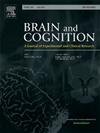婴儿的微观状态分析:在休息和实验任务中检查婴儿大脑
IF 1.4
3区 心理学
Q3 NEUROSCIENCES
引用次数: 0
摘要
微观状态是空间地形的短暂、稳定状态,可以用脑电图(EEG)测量,并被认为可以捕捉全脑激活模式。在成年人群中,脑电微观状态与功能性磁共振成像(fMRI)测量的功能网络有关。微观状态分析为测量大脑活动提供了一个独特的机会,在婴儿从事认知和情感突出任务时,以优越的时间敏感性捕捉全脑动态。此外,婴儿和成人之间的微观状态的比较文献提供了洞察功能网络的出现和发展。目前的研究检查了61名婴儿(6-12个月)的微观状态,除了实验室任务外,还利用清醒休息任务来引发认知和情绪反应。在这些任务和跨活动中比较脑电图微状态的地形和参数。假设从婴儿脑电图数据中提取微观状态,静息(或基线)地形提供先前工作的复制(Brown &;Gartstein, 2023)。假设实验任务将产生与静息任务相似的四种微观状态,引发平静/警觉状态,并且根据处理特定于每个活动的信息所需的潜在功能网络,任务内部和任务之间的参数会有所不同。在不同的任务中发现了类似的地形,并且与成人文献一致。在与相关功能网络一致的任务内部和任务之间的比较中,地形和参数有所不同。这些发现指出了微观状态分析在测量情绪处理和认知方面的有用性,以及这些如何作为大脑发育的功能出现。本文章由计算机程序翻译,如有差异,请以英文原文为准。
Microstate analysis in infancy: Examining infant brain at rest and during experimental tasks
Microstates are brief, stable states of spatial topography that are measured with electroencephalography (EEG) and thought to capture whole-brain activation patterns. EEG microstates have been associated with functional networks measured with functional magnetic resonance imaging (fMRI) in adult populations. Microstate analysis offers a unique opportunity to measure brain activity, capturing whole-brain dynamics with superior temporal sensitivity as infants engage in cognitive and emotionally salient tasks. Additionally, comparison of microstates between infants and the adult literature provide insight into functional network emergence and development. The current study examined microstates in 61 infants (ages 6–12 months) utilized a wakeful resting task in addition to laboratory tasks designed to elicit cognitive and emotional responses. The EEG microstate topographies and parameters were compared within these tasks and across activities. It was hypothesized that microstates would be extracted from infant EEG data, with resting (or baseline) topographies providing replication of previous work (Brown & Gartstein, 2023). It was hypothesized that the experimental tasks would produce four microstates similar in topography to the resting task, eliciting a calm/alert state, and that parameters would differ within and across tasks depending on the underlying functional networks needed to process information specific to each activity. Similar topographies were found across tasks and were consistent with the adult literature. Topographies and parameters differed in comparisons within and across tasks consistent with the associated functional networks. These findings point to the usefulness of microstate analysis in measuring emotional processing and cognition and how these emerge as a function of brain development.
求助全文
通过发布文献求助,成功后即可免费获取论文全文。
去求助
来源期刊

Brain and Cognition
医学-神经科学
CiteScore
4.60
自引率
0.00%
发文量
46
审稿时长
6 months
期刊介绍:
Brain and Cognition is a forum for the integration of the neurosciences and cognitive sciences. B&C publishes peer-reviewed research articles, theoretical papers, case histories that address important theoretical issues, and historical articles into the interaction between cognitive function and brain processes. The focus is on rigorous studies of an empirical or theoretical nature and which make an original contribution to our knowledge about the involvement of the nervous system in cognition. Coverage includes, but is not limited to memory, learning, emotion, perception, movement, music or praxis in relationship to brain structure or function. Published articles will typically address issues relating some aspect of cognitive function to its neurological substrates with clear theoretical import, formulating new hypotheses or refuting previously established hypotheses. Clinical papers are welcome if they raise issues of theoretical importance or concern and shed light on the interaction between brain function and cognitive function. We welcome review articles that clearly contribute a new perspective or integration, beyond summarizing the literature in the field; authors of review articles should make explicit where the contribution lies. We also welcome proposals for special issues on aspects of the relation between cognition and the structure and function of the nervous system. Such proposals can be made directly to the Editor-in-Chief from individuals interested in being guest editors for such collections.
 求助内容:
求助内容: 应助结果提醒方式:
应助结果提醒方式:


